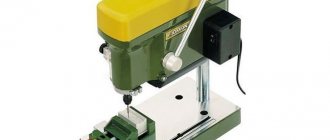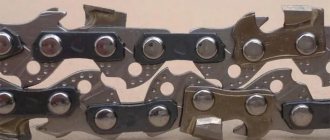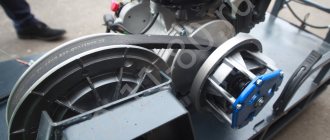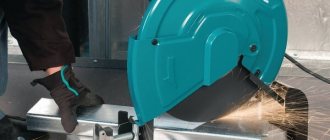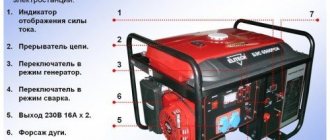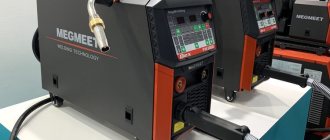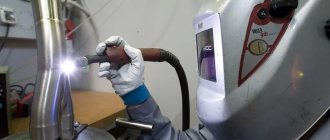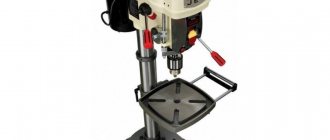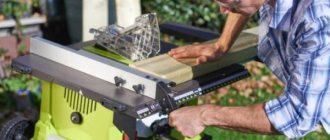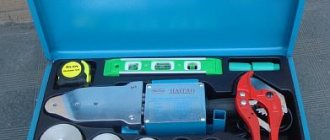To increase efficiency, many carpenters prefer to use an electric planer, which does all the woodworking without causing any harm to the user. They come in tabletop or floor-mounted versions and can do the job of planing wood pieces with such precision that you'll never have to do it by hand again.
There are many machines available in the market, selling at different prices, and sometimes choosing can be a challenge. If you want to add the best wood planer to your workshop, but don't know which one to choose, then our rating will help you with this. In this review, we will look at the best models in 2021-2022, and also give some tips on choosing a device.
Rating of the best thicknessing machines for wood 2021-2022
| Place | Name | Price | Rating |
| The best thicknessing machines for wood by price/quality for 2021-2022 | |||
| 1 | Makita 2012NB 1.65 kW | Find out the price | 9.9 / 10 |
| 2 | DEWALT DW735, 1800 W | Find out the price | 9.8 / 10 |
| 3 | BISON SRF-254-1600S 1.6 kW | Find out the price | 9.7 / 10 |
| 4 | DeWALT DW733 1.8 kW | Find out the price | 9.6 / 10 |
| The best thickness planers for wood with belt drive | |||
| 1 | BISON SR-330-1800 1.8 kW | Find out the price | 9.9 / 10 |
| 2 | BELMASH JT-2 254/120 1.8 kW | Find out the price | 9.8 / 10 |
| 3 | Encore Corvette 22-330 1.5 kW | Find out the price | 9.7 / 10 |
| The best inexpensive thicknessing machines for wood | |||
| 1 | BISON RS-305 2 kW | Find out the price | 9.9 / 10 |
| 2 | BELMASH JT-2 204/210 1.5 kW | Find out the price | 9.8 / 10 |
| 3 | PATRIOT TP 330 2 kW | Find out the price | 9.6 / 10 |
Table of contents:
- Rating of the best thicknessing machines for wood 2021-2022
- How to choose a planer for wood and what to look for?
- RPM
- Number of knives
- Cutting ability
- Size and weight
- Dust collection system
- Motor
- The best thicknessing machines for wood by price/quality for 2021-2022
- 1. Makita 2012NB 1.65 kW
- 2. DEWALT DW735, 1800 W
- 3. BISON SRF-254-1600S 1.6 kW
- 4. DeWALT DW733 1.8 kW
- The best thickness planers for wood with belt drive
- 1. BISON SR-330-1800 1.8 kW
- 2. BELMASH JT-2 254/120 1.8 kW
- 3. Encore Corvette 22-330 1.5 kW
- The best inexpensive thicknessing machines for wood
- 1. BISON RS-305 2 kW
- 2. BELMASH JT-2 204/210 1.5 kW
- 3. PATRIOT TP 330 2 kW
- Results
- Customer Reviews
- Useful video
Which company should you choose?
When purchasing a thickness planer, experts recommend giving preference to popular manufacturers of tools and workshop equipment.
These brands have proven their reliability and are also able to offer the buyer high-quality service for further maintenance of devices:
- Makita;
- BISON;
- PATRIOT;
- BELMASH;
- DeWALT.
How to choose a planer for wood and what to look for?
RPM
This value tells how fast the blades rotate. The higher the number, the smoother the cut. To make your face look smoother, you will need higher values. But if you are only doing rough planing, lower grades will be acceptable.
Number of knives
The number of knives is also an important factor. Many planers have two blades, but some have a spare. It's better to have three knives because they provide a smoother cut, can cut through harder wood, and the blades also tend to dull less quickly.
Some machines use double-sided knives. When they become dull, you can swap them and use them in a different direction, extending their life. Finally, since all blades will become dull over time, you should also check how easy they are to remove and replace.
Cutting ability
Another important factor to consider is the cutting ability of the tool, which depends on the size of the wood you need to plan. Most tabletop planers have a maximum load capacity of 300mm to 330mm. There is no point in buying a larger planer if you will never need the maximum power.
Size and weight
If you are looking for tabletop planers, then you need some portability. If you need to move it around a lot, it is better to buy something lighter. Weight can also be beneficial because heavier machines vibrate less. If you only plan to use your planer in one place, purchasing a heavier model may be an advantage.
Dust collection system
All planers produce sawdust and chips, and this must be dealt with. If you allow sawdust to accumulate, it will prevent you from working properly and it will also become airborne, which will affect your breathing. You should make sure that any model you are interested in has a proper dust collection system.
Motor
Choosing the right motor will help extend the life of your machine and save on your energy bills. Wood planers use two types of motors: universal motors and asynchronous motors. Asynchronous motors are more powerful and durable than universal motors. They also weigh more, making them best suited for stationary woodworking machines.
And universal motors are smaller, weigh much less and are an ideal choice for handheld machines.
Types of machines, purpose and differences
Every person who is seriously involved in wood processing sooner or later comes to the question of quickly and efficiently planing boards. To eliminate manual labor and improve the quality of work, there is a special unit - a surface thicknesser. This term hides a variety of equipment for different purposes and tasks.
It’s worth starting the division with the type of plane:
| View: | Description |
| Unilateral | A household model, working on one plane of the workpiece. Used at home. Prices vary, it is possible to choose an option with the optimal price-quality ratio |
| Two sides | Option for professionals. Work goes on both the lower and upper sheets of the workpiece. High power and speed |
| Multilateral | An industrial variety that processes wood from several sides at once. This is necessary to obtain ideal geometry and texture. Huge performance and exceptionally stationary development |
Classification by design
Devices for working with wood can be divided into 2 types:
- Mobile . The difference is in light weight and small dimensions. Most often they are mounted on top of the desktop. Used for processing small parts in a home workshop
- Stationary . Large and heavy option, used for large raw materials
Regardless of the demand for the model and its design, products in 99% of cases will be equipped with an automatic feed mechanism. The existing rollers press the tree against the shaft and advance it until it appears in the working area.
Average power ratings of products range from 1.5 to 8 kW. In addition, the models will differ not only in functionality, but also in the speed of rotation of the shafts, electricity consumption, number of cutting elements, cost and a number of other parameters.
Functional
In order not to make mistakes when choosing, it is worth studying the basic and additional options of a thickness planer for the home workshop and production. Which machine can you choose:
- Household . A compact and fairly lightweight model that can be placed in small spaces, has low or medium engine power and a reasonable price. Most often, minor processing is performed on it and a cut is made to a depth of up to 1.5 mm. Requires manual feeding due to the lack of power for deep cutting. To this should be added the need to exert significant body effort. Industrial use is not possible.
- Industrial . The best models have high speed and significant power, allowing for deep cuts. Occupies quite a large area. Has autofeed function by default. A 380 V network is used for power supply. The presence of high power determines the need for a cooling system. The blades can be mounted on both sides or on one side. Among the main structural elements you can find a double stand and a movable drum. It is possible to adjust the cutting depth using the control unit.
- Planer-thicknesser . It is used when there is a need for exceptional precision of parts or other products made from wood. Provides an ideal surface, reduces thickness longitudinally and eliminates various deformations, be it a splinter, a cut, a bulge, etc. Some manufacturers provide the possibility of reciprocating movements. Whether it's worth buying depends on the needs of the workshop. But it is definitely on the list of the best. There are both foreign and domestic manufacturing companies on the market. Every year you can find a new product that has fundamentally new functionality.
- Planer-thicknesser . Used for milling, processing bases using knives on the shaft. There are only two types - with one and two sides. In the first case, it occurs both in amateur carpentry and in serious industries.
Results
Let's summarize the rating:
- In the category “thicknessing machines for wood by price/quality for 2021-2022”:
- in 4th place was a model suitable for smaller workpieces;
- 3rd place was taken by a model from a Russian manufacturer, which combines a jointer and thickness planer;
- 2nd place was taken by a semi-professional model, suitable for experienced workers and amateurs;
- 1st place was deservedly taken by a model with excellent ease of use.
- In the category “thicknessing machines for wood with belt drive”:
- 3rd place was taken by a portable model at an affordable price;
- 2nd place was taken by one of the most functional combinations of a jointer and thickness planer - BELMASH JT-2 254/120 1.8 kW;
- 1st place goes to the ZUBR SR-330-1800 1.8 kW model with a fairly powerful engine and durable design.
- In the category “inexpensive thicknessing machines for wood”:
- 3rd place goes to the PATRIOT TP 330 2 kW model, which has good processing ability.
- 2nd place is deservedly taken by BELMASH JT-2 204/210 1.5 kW with an excellent set of functions necessary for working with wood.
- The honorable first place goes to the ZUBR RS-305 2 kW model, which is distinguished by its high-quality processing of workpieces.
Scope of application
This technique is found at all wood processing bases without exception. With its help, the following tasks are solved:
- equalizing the thickness of the workpiece;
- precise cutting of panels and boards for finishing floors or walls in public spaces;
- production of a perfectly smooth surface;
- flat processing.
Before getting behind the thicknesser, you need to carry out a thorough debugging procedure, paying attention to:
- on the accuracy of the installation of the machine - it should be installed evenly and without distortion;
- eliminate low placement of the corrugated shaft;
- adjust the pressure on the processing surface in the rear block (pressure block);
- set the parameters in such a way as to avoid high pressure on the lower rollers working to feed the workpiece above the level;
- check the functional part of the exhauster. If there is a malfunction, you may encounter chips getting into the rear main roller;
- Finally, you need to make sure that the cape visor is present and in the correct position;
- check the functioning of the exhauster. If it malfunctions, chips may end up in the rear main roller;
- look at the installation of the cap visor.
Main parameters and GOST
Planer-thicknesser machines, mostly manufactured in the Russian Federation, will comply with the set of technical characteristics. The latter are enshrined in the official standard GOST 7228-93.
Among the parameters you can find:
- dimensions of wooden blanks (taking into account the thickness and width of the raw material);
- permissible length, specific value;
- number of knives on the shaft;
- sides processed in one pass;
- shaft rotation speed;
- power plant power indicator;
- speed of progress of the operation;
- total weight of the product.
Most machines support the processing of wood raw materials in the following dimensions:
- 315-1250 mm - permissible width;
- 5-160 mm – minimum and maximum thickness.
These parameters should be taken as average and generalized; they may differ depending on the specifics of production. The minimum length of wood is indicated by the diameter of the drum. Modern values set the minimum possible parameter for a given value to be >30 mm.
Depending on the area of use, one or more knives will be attached to the shaft design, rotating at a frequency of five to ten thousand revolutions per minute. The value is average, by analogy with the others it can be higher or lower. For example, a desktop model rarely has a shaft rotation speed of 5,000 revolutions, but if necessary, in a somewhat universal device you should strive for this value. If you ignore this factor, you may encounter difficulties in completing the task.
The feed speed of workpieces for standard and professional devices will be in the range from 6 to 24 meters per minute. This is the optimal threshold value that allows you to create more than a hundred products within one shift. The weight of the structure will depend on the completeness of the equipment and the presence of additional optional blocks. When choosing a product for your home, it is better to focus on a desktop copy. Accordingly, the production apparatus should also have no compromises.
